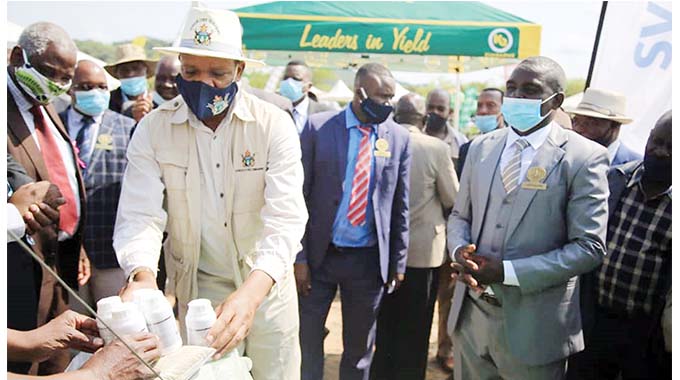Repossession of idle farms starts today

Patrick Chitumba, Midlands Bureau Chief
The process of repossessing farms that are under-utilised, vacant or abandoned as well as those owned by multiple farm owners starts today across the country and the land will be allocated to applicants that have been on the land waiting list.
The Government which says the move is meant to ensure the finite resource is fully utilised, also announced that it has approved farming joint ventures on A1 and A2 farms to enhance production and profitability but however said such arrangements must first be approved by the Ministry of Lands, Agriculture, Water and Rural Resettlement.
The country is importing food to cover the food deficit caused by successive droughts and also the failure by some new farmers to fully utilise the land.
Speaking during the launch of the Zunde raMambo/ Isiphala se Nkosi programme at Chief Mapanzure’s homestead in Zvishavane on Saturday, Lands, Agriculture, Water and Rural Resettlement Minister Dr Anxious Masuka said Government is implementing the one man one farm policy so that other landless Zimbabweans can be allocated land on repossessed farms.
“Government will from Monday start the exercise of repossessing land from multiple farm owners, those who have abandoned the land and those who are underutilising the land. The repossessed land will be allocated to the landless as we push to achieve the agricultural revolution aimed at making the country food secure,” he said.
Minister Masuka said those with more than one farm will be left with one, those underutilising the land will lose the portion that is not being utilised and the abandoned or vacant land will be repossessed.
He said farmers with bigger farms than the recommended sizes but are fully utilising the land will be spared.
Under the farm size limits, farms in natural region One, generally specialist farming areas in the Eastern Highlands should not exceed 250ha; those in region Two, the well-watered northern highveld areas, are limited to a maximum of 500ha; farms in region Three, largely less well-watered than region two, should be limited to 700ha; region four farms, mostly in livestock production areas, should be at most 1 000ha; and natural region five farms, usually ranches, should not go beyond 2 000ha.
“Productive farms will be exempt, we will not downsize or repossess productive farms. We are being guided by Statutory Instrument 41 of 2020,” said Minister Masuka.
He said Government was aware of the fact that some farmers allocated A1 and A2 farms have no capital to embark on meaningful production.
Dr Masuka said such farmers will be allowed to go into joint ventures subject to the lands Ministry’s approval.
“We are aware that some individuals allocated farms do not have adequate resources to fully utilise the land hence this decision to allow joint ventures. We are saying if you can find partners to go into joint venture, that is a good route but you must get authorisation from the ministry. No joint venture without Government approval will be entertained,” he said.
According to a notice in the media from Dr Masuka, no beneficiary of the Land Reform Programme can enter into any share-cropping agreement without Government’s approval.
Dr Masuka said the joint ventures are meant to enhance production and profitability on farms in support of the Agricultural Systems Transformation Strategy which is critical for realising Vision 2030.
He said all joint venture agreements should ensure and entrench skills transfer.
